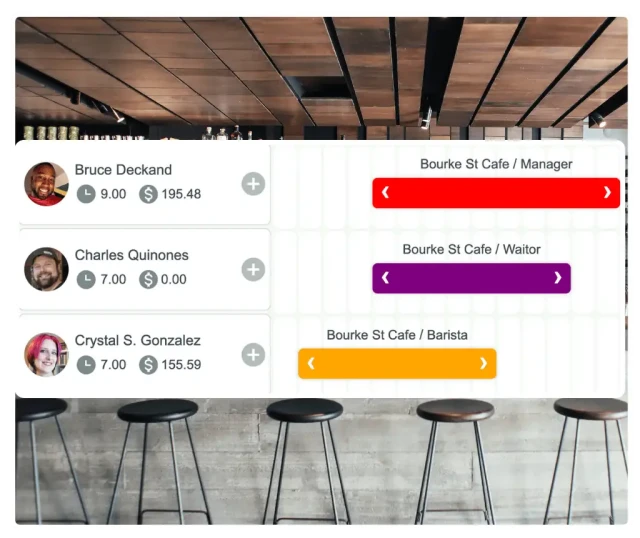
Define your target labour spend for a period (day/week/month), by location, team or role — include wage rates, allowances, overtime rules and acceptable labour-% of revenue or cost centre.

As shifts are planned, the system calculates estimated cost (hours × rate + loadings) and displays the live total, labour % and any deviation from budget. You can see at a glance how each shift affects cos

Once shifts are worked, time is captured and compared to the plan. Alerts flag when cost thresholds are exceeded, so managers can make adjustments (reduce hours, reassign roles, hire flex staff) and keep budgets on track.





Labour is often the largest controllable cost in shift-work environments; real-time budget tracking helps avoid surprises in the wage bill.

By matching budgeted labour to actual demand, you minimise periods of over- or under-staffing — improving service levels and cost efficiency.

Built-in cost dashboards show how each shift contributes to spend, enabling managers to make informed scheduling decisions.

With budget assumptions tied to actual hours, rates and award loadings, there’s less chance of mis-paying, breaching budgets or failing cost-tracking obligations.

Alerts or visual indicators of budget deviations let you intervene early, reassign or reduce hours, and keep labour costs under control.

As your shift-based operations grow (more sites, teams, or roles), labour budgeting tools let you replicate cost-controlled rostering across all units
Labour budgeting software questions? We have the answers
Labour budgeting is the process of setting, tracking and controlling your staffing wage spend against targets for hourly or shift-based teams. Rather than letting labour costs drift without oversight, managers define budgets based on roles, hours, cost centres, and expected business activity — then monitor real-time spend as the roster is built and executed.
The goal of labour budgeting is to align staffing levels with both business demand and cost limits. It means assigning the right person at the right rate, avoiding overstaffing or uncontrolled overtime, and minimising surprises in the wage bill.
Modern rostering systems like RosterElf integrate labour budget tools directly into the roster creation screen. As you drag shifts, change hours or swap roles, budget dashboards update instantly — showing actual vs planned cost, labour percentage, and alerts when thresholds are breached.
Because labour budgeting ties into live availability, overtime rules, award loadings and payroll integration, every change in the roster flows through to cost tracking. Managers can intervene early, keep wage spend within plan and ensure shift workers are scheduled fairly and efficiently.
In short, labour budgeting keeps your wage cost under control, makes the workforce more responsive to demand, and ensures every shift decision supports both service and financial outcomes.